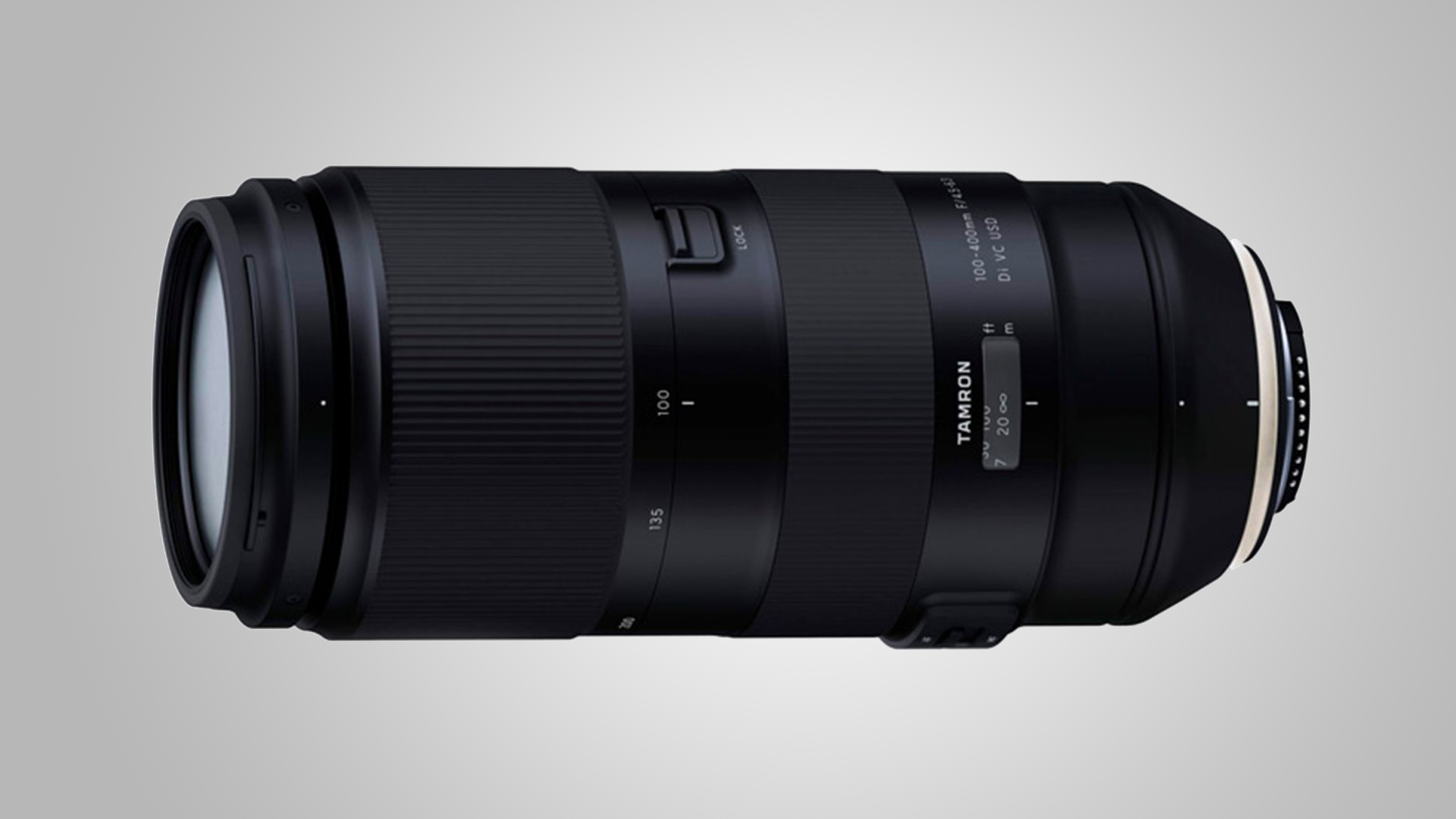TechRadar Verdict
This first-edition 100-400mm performs well straight out of the blocks, packing real punch into a refreshingly lightweight build, and when it comes to outright image quality, the Tamron puts plenty of bigger, more expensive lenses in the shade. It’s a steal at the price.
Pros
- +
Useful super-telephoto reach
- +
Relatively compact and lightweight
- +
Well built with good performance
Cons
- -
Shorter reach than most super-tele zooms
- -
Typically ‘slow’ aperture rating
- -
Tripod mount ring not included
Why you can trust TechRadar
Super-telephoto zooms have grown in popularity over the past few years, Tamron’s latest 150-600mm G2 being an excellent example. The lens is tough and well-built, and delivers very good all-round performance along with impressive image quality. The only real downside is that it’s a typically big and hefty lens, measuring 260mm in length and weighing over 2kg.
Going toe to toe with Sigma’s already well-established 100-400mm ‘Contemporary’ lens, this Tamron 100-400mm for Canon and Nikon DSLRs reins in the amount of super-telephoto reach, enabling it to be a more manageable 199mm in physical length and barely more than half the weight. As such, it tips the scales at 1,135g for the Canon-mount edition, and 1,115g for the Nikon-fit version. The upside is that It’s much less of a strain for prolonged periods of handheld shooting, and easier to simply carry around.
Features
- Features a fully internal focusing mechanism
- Ring-type ultrasonic autofocus
- VC (Vibration Compensation) optical stabilization system
Like most super-telephoto zooms with a variable rather than ‘constant’ aperture rating, the Tamron has a fully internal focusing mechanism, so the front element neither rotates nor extends during focusing. Equally typically, its physical length nearly doubles when zooming to the longest focal length. So while the lens is reasonably compact for stowage and carrying around, it’s still pretty big when shooting at or near the longest zoom setting.
Focal length: 100-400mm
Mount: Canon, Nikon
Filter size: 67mm
Max aperture: f/4.5-6.3
Maximum magnification: 0.28x
Dimensions: 86 x 199mm
Weight: 1,135g (Canon) 1,115g (Nikon)
The optical path includes three LD (Low Dispersion) elements to boost sharpness and reduce color fringing. Tamron’s ‘eBAND’ and nano-structure coatings are also on hand to minimize ghosting and flare. Other feature highlights include ring-type ultrasonic autofocus, with the usual manual override and a focus distance scale beneath a viewing panel. There’s also a VC (Vibration Compensation) optical stabilization system and, unlike the stabilizers fitted to most Tamron lenses, this one has switchable static and panning modes.
An electromagnetically controlled diaphragm is used in the Nikon as well as the more usual Canon mount version of the lens. This helps to ensure exposure consistency in continuous shooting mode, but makes aperture control unavailable in some of Nikon’s older DSLRs.
Optional extras include an own-brand Tamron 1.4x tele-converter, the use of which maintains the availability of autofocus in DSLRs that support AF at an aperture of f/8. There’s also a TAP-in Console (£79/$59)for applying fine-tuning and firmware updates, and a typically pricey tripod mount ring (£110/$129), but at least the latter is directly Arca-Swiss compatible.
Build quality and handling
- Build quality is excellent
- Handling is very refined
- Outer barrel is made from magnesium alloy
Despite the reasonable asking price, build quality is excellent. The main section of the outer barrel is made from magnesium alloy and feels very robust, and the lens features weather-seals and a fluorine coating on the front element, which repels moisture and grease, and eases cleaning.
Handling is very refined, with a smooth-action, precision feel to the zoom and focus rings. Our review sample didn’t suffer from any zoom creep whatsoever, but a zoom lock switch is fitted nonetheless. Additional switches are on hand for the dual-mode VC system, and for AF/MF/Limit. The autofocus range limiter is cleverly implemented, its ‘Limit’ position enabling the opposite sector of the autofocus range to be locked out, depending on whether a short of long focus distance is in use when the switch is activated.
Performance
- AF system is super-fast and consistently accurate
- Contrast is excellent throughout
- Centre-sharpness is rather better than Sigma rival
Thanks in part to dual microprocessors and built-in digital signal processing, the autofocus system is super-fast and consistently accurate. It’s also whisper-quiet, which can be a bonus when photographing wildlife. Tamron’s VC system is typically effective, giving a benefit equivalent to around four f/stops. It makes a huge difference in getting consistently sharp shots, especially on APS-C format DSLRs, where the ‘effective’ zoom range is boosted to 160-640mm (Canon) or 150-600mm (Nikon).
Contrast is excellent throughout the entire zoom range, even when shooting wide-open, as is sharpness across most of the frame. Centre-sharpness is rather better than from Sigma’s competing 100-400mm lens at any given focal length. However, when shooting on a full-frame rather than an APS-C format camera body, there’s a more noticeable drop in the Tamron’s corner-sharpness. Color fringing is minimal throughout the zoom range, and the touch of pincushion distortion at 100mm only gets a little worse at medium to long zoom settings.
Verdict
Tamron’s updated G2 (Generation 2) lenses have really impressed us recently, especially its 70-200mm f/2.8 zoom, which is simply fabulous. This first-edition 100-400mm performs well straight out of the blocks, packing real punch into a refreshingly lightweight build.
The weather-sealed construction is of very good quality throughout, handling is refined, and all areas of performance are impressive. The autofocus and stabilization systems are both excellent, and when it comes to outright image quality, the Tamron puts plenty of bigger, more expensive lenses in the shade. It’s a steal at the price.
